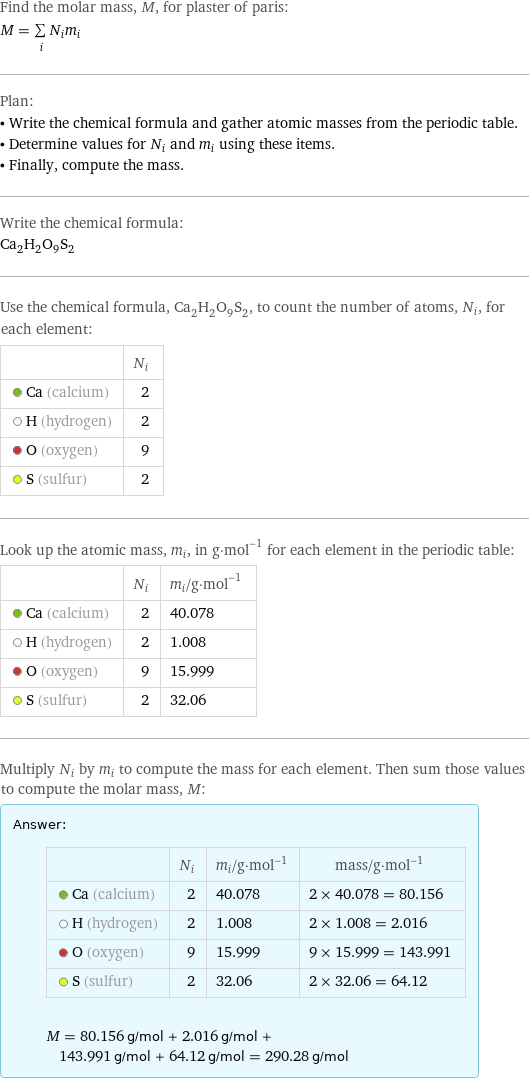Input interpretation

plaster of paris | molar mass
Result

Find the molar mass, M, for plaster of paris: M = sum _iN_im_i Plan: • Write the chemical formula and gather atomic masses from the periodic table. • Determine values for N_i and m_i using these items. • Finally, compute the mass. Write the chemical formula: Ca_2H_2O_9S_2 Use the chemical formula, Ca_2H_2O_9S_2, to count the number of atoms, N_i, for each element: | N_i Ca (calcium) | 2 H (hydrogen) | 2 O (oxygen) | 9 S (sulfur) | 2 Look up the atomic mass, m_i, in g·mol^(-1) for each element in the periodic table: | N_i | m_i/g·mol^(-1) Ca (calcium) | 2 | 40.078 H (hydrogen) | 2 | 1.008 O (oxygen) | 9 | 15.999 S (sulfur) | 2 | 32.06 Multiply N_i by m_i to compute the mass for each element. Then sum those values to compute the molar mass, M: Answer: | | | N_i | m_i/g·mol^(-1) | mass/g·mol^(-1) Ca (calcium) | 2 | 40.078 | 2 × 40.078 = 80.156 H (hydrogen) | 2 | 1.008 | 2 × 1.008 = 2.016 O (oxygen) | 9 | 15.999 | 9 × 15.999 = 143.991 S (sulfur) | 2 | 32.06 | 2 × 32.06 = 64.12 M = 80.156 g/mol + 2.016 g/mol + 143.991 g/mol + 64.12 g/mol = 290.28 g/mol
Unit conversion

0.29028 kg/mol (kilograms per mole)
Comparisons

≈ 0.4 × molar mass of fullerene ( ≈ 721 g/mol )

≈ 1.5 × molar mass of caffeine ( ≈ 194 g/mol )

≈ 5 × molar mass of sodium chloride ( ≈ 58 g/mol )
Corresponding quantities

Mass of a molecule m from m = M/N_A: | 4.8×10^-22 grams | 4.8×10^-25 kg (kilograms) | 290 u (unified atomic mass units) | 290 Da (daltons)

Relative molecular mass M_r from M_r = M_u/M: | 290